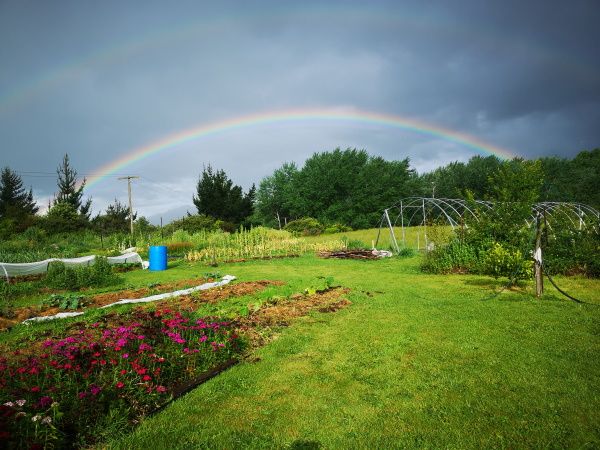🌱 Happy Mother's Day & Shallot and Tree Onion Seed Available! 🌱
Posted on
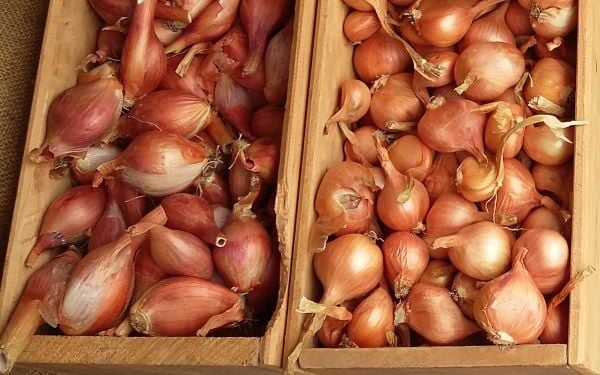
|
|
|
Posted on

|
|
|
Posted on
At long last, our seed garlic and potato onions are ready for sale! We apologise for the delay and for the fact that our shallots are still curing, so watch this space, they will come available soon, we just need to get them a bit drier before we send them out. We will probably announce their sale with our seed potatoes.
As so many folks have experienced add on effects from COVID-19, we have felt it most acutely this season with a lack of help in the seed gardens! Our intern from Italy who had pre-booked, was of course unable to get in the country. We were able to make it through spring with some lovely wwoofers, but this channel seems to be going dry as the travellers slowly head home when their visas expire. And to top it off, my beautiful Ma, who comes each summer to live with us is stuck in the USA in her singular bubble. I am sure our story is not unique. Just letting everyone know that we are down the best babysitter we got and with no interns or wwoofers our labour force is paired back. Please do get in touch if you, or someone you know may be interested in an internship or part -time work.
This lack of help in the garden has had a positive side. We have hired our first ever employee, our amazing Administrative Assistant Rebecca Perez. I am not sure how we would have been able to get through this season without all of her help! I hope you have all found it okay to be receiving emails from someone other than me. Rebecca, Roddy and I are always in close communication, she is a lifesaver! I am certainly enjoying this new freedom and have more time in the garden then I have had since our daughter was born. I am making more connections and finding better ways to do things here, on this land. And I am remembering, I really like gardening, and I am actually rather good at it 😊
We know many of you have been waiting for our seed garlic to come available on our website, and the moment is now. We are able to offer for sale our early varieties and the elephant garlic. We successfully grew and have gotten a crop of all our main crop cultivars, although the amount we grew is still too small for commercial sale. We hope to have Rocambole, Henry’s Soft Top and Takahue available again in the future, but the Early Pearl and Early Purple specifically are holding their own better with the rust. We had a good year with garlic in general, and we feel confident the strategies we have put in place to produce a crop in the presence of rust are effective. To see what we have been doing check out our newsletter from last year. We have learned a lot along the way, and want to share this knowledge so everyone may still be able to succeed with their garlic crop!
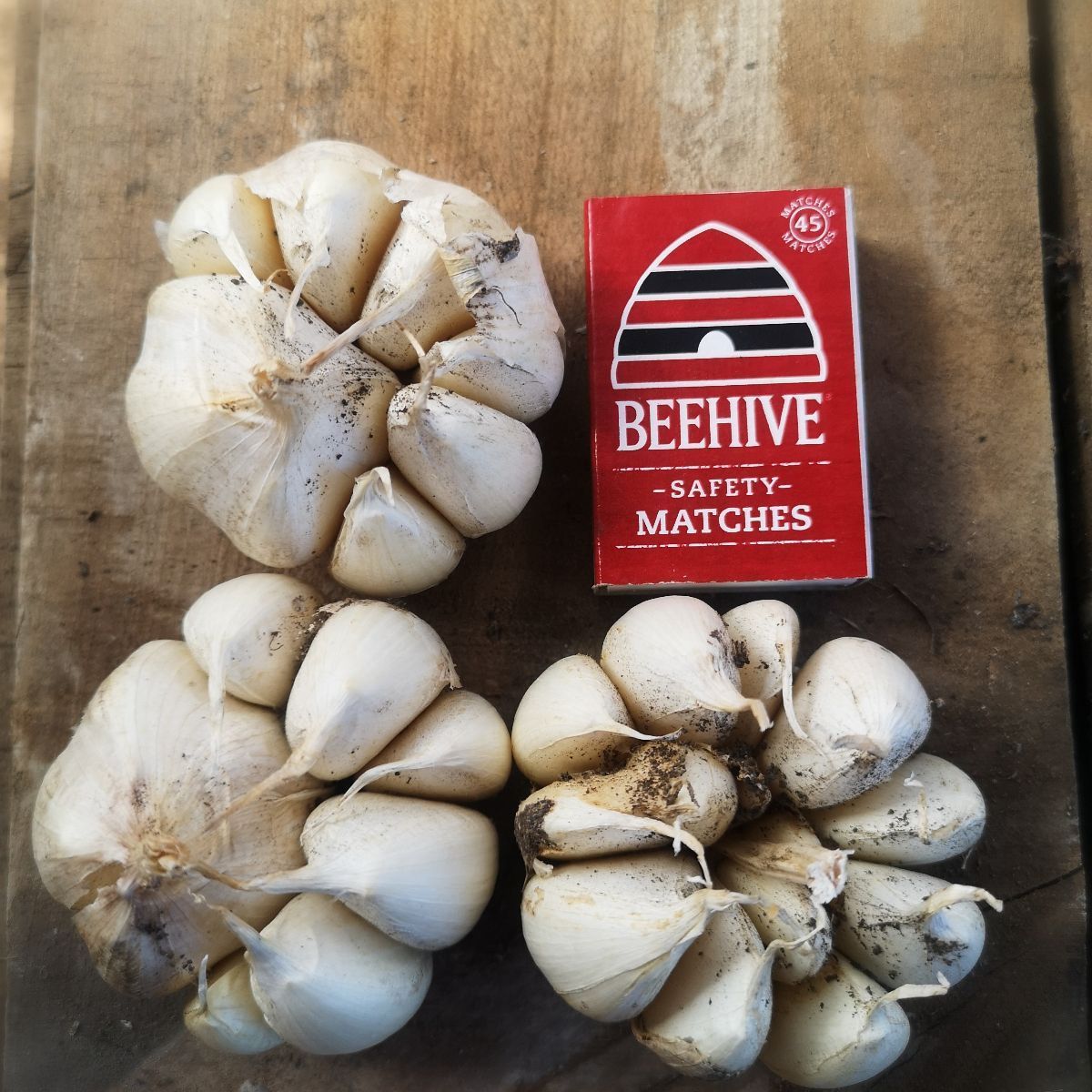
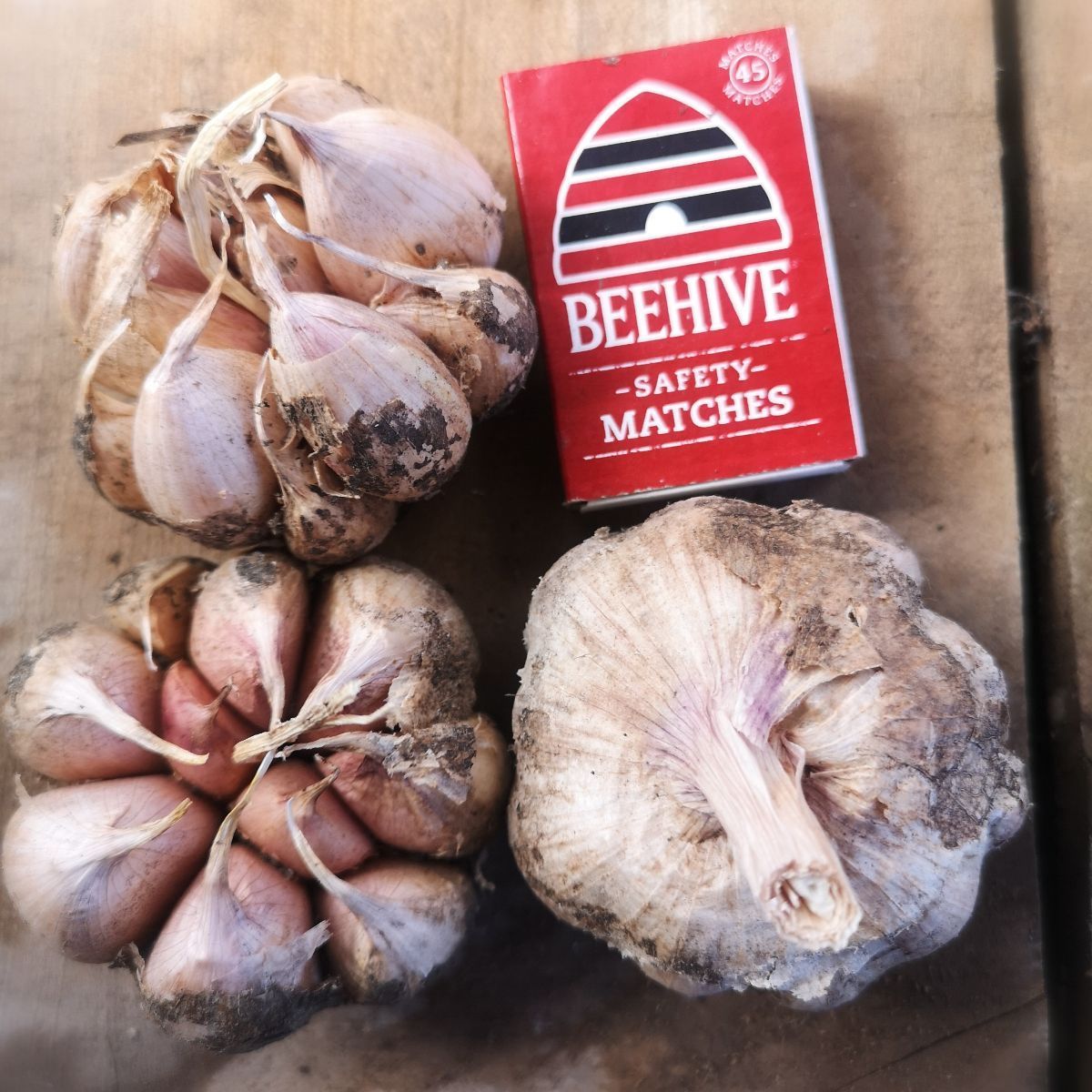
Posted on
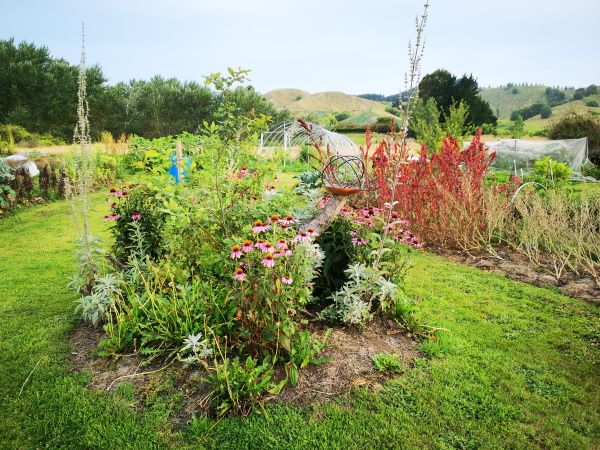
Snow sits on the high hills out the window as I type and I know that the time to be “doing” in the garden has slowed to an almost halt. Fortunately, it is the quiet time in the garden as the garlic is in and safely mulched away, and now is more of a time for reflection over the last season and what you will do this coming season in your vegetable patch. But, before I can continue to announce our new range I would like to offer an excerpt from our Opening Letter in our new Catalogue, (to read the full letter which I hope you do, please find it at the beginning of our PDF Catalogue):
“As I write these words, the events occurring around the world have been overshadowing all of our lives. With COVID-19 ramping up and hitting NZ in March for our Level 4 lockdown, we experienced this in a different way to many folks. While others were at home with their families, perhaps not knowing what to do with their new found freedom and space, we were thrown into the busiest 6 weeks of our lives in terms of our business! Being an essential service showed us how much we are on the right track with our lives. We changed very little in our daily routine, but we did have many more orders to fill, many more emails to answer. We saw other seed companies experiencing the same. We decided not to shut down when everyone needed us the most and try our best to fill orders and get the seeds out to the people. It was amazing to witness so many people rediscovering gardening at such an uncertain time in all our lives. We were, and are still grateful to have been a part of that for so many Kiwi families. I would like to apologise if some of you did not get the seeds you had wanted or had to wait a long time for your order to arrive. Please know we were doing the best that we could in such an intense and challenging time.
As we sit in our post lockdown space, it is good to remember what we learned through our times at home and to continue to prioritise for our lives what is truly important for us and our families. It has been a great opportunity to reflect and make changes if necessary. I want to acknowledge how difficult it may have been and continues to be for some, especially those who may have lost a loved one during this time. I hope that all are getting the support and help they need as we all try to figure out our new way forward.
We have had it very good as a nation and I am aware that it is still a very intense climate in other parts of the world, made more intense by the recent events in the USA. It seems to be a moment in our history where change is palpable. I invite all of us gardeners to help hold the space and, hopefully, we will all emerge through this time for the better, with more skills and vision to create our new world together. I, for one, see gardens everywhere where all people can come together and harvest food for their families. If this is a visioning time, let’s envision a society that values family, unity, freedom, nourishment and respect for the earth which provides. Let us make our decisions from a place of love, not fear. We can do it, the time is now. Let us see what can blossom and rise up from this dark time.
On a very positive note, just before lockdown came into effect, we became proud owners of the farm we live on! As many of our long time customers may know, we have never owned land before and have always leased land for our seed gardens. Being earth stewards, we always found a way and a landowner to work with, so that we could follow our passion to grow nutrient dense seeds for sale and to feed ourselves healthy food from our garden. It has not always been an easy journey and at times we have had to move our business and gardens when we did not expect to. So it is with great joy that we share this news that Setha’s Seeds has a permanent home in Tutira!”
So in this quiet space we find a perfect time for browsing our new 2020/21 catalogue! We have updated our website and our full range of freshly germination tested seeds are all listed on our Website, PDF Catalogue, and we can also send you a physical copy of our catalogue if you get in touch to request one. We prefer orders through the website, but please choose the method of ordering that works best for you.
As we gear up for spring in the garden in our new world, where travel is less possible, we would like to put the call out to locals and travelers already in the country, to get in touch as we are looking to invite individuals and or couples to intern with us. We have had so much fun with our internship program and we hope this year is no different. Internships are a minimum of 2 months and can extend for longer periods. We also accept wwoofers for shorter periods. We can tailor programs to suit your needs, so if you have any questions please get in touch. Please let anyone know who you think might be interested. All inquiries are welcome and considered and more information is available on our website.
We are also about to start planning all of our spring plantings, as now is the time to decide: what do you want to grow this year! Such an exciting time where the possibilities seem endless; or at least as endless as space allows. So remember how big your garden is when sowing seeds. Also take a moment to check out our NEW Garden Combo Deals! If you are new to gardening and don’t know where to begin, these Combos are designed with you in mind. Something else new to the catalogue which I am proud to announce, is the beautiful Seed Art Gift Cards created by my mother, Suchitra Davenport. We hope you find them as stunning as we do! Also, back in stock now you will find our seed potatoes. Please, we ask for no large orders as stock is limited, we would like to share the seed spuds around. We appreciate your understanding.
Things to Sow in the Garden Now:
As we have passed the Winter Solstice and the days are growing longer we can start sowing some of our earliest spring vegetables. We will be sowing shortly, Silverbeet Fordhook Giant, Broccoli De Cicco & Romanesco, Broccoli Raab Spring Rapini, Arugula Wild, Cress Land, Rocket, Mizuna, Tat Soi and Lettuces Tree, Speckled, Red Salad Bowl, St Vincent and Lollo Rossa. Don’t forget the companion flowers! You can get underway now or in the next few months Aquilegia Grandmother’s Garden, Dianthus Clove Pink, Cleome Heritage Queen Mix, Statice Sea Lavender, Calendula Orange, Echinacea, Lupin Blue, Sweet Williams and Poppies. So many options, some perennial and some annual so make sure you choose the ones that suit your garden best.
We are always working with the Cosmos with our sowings, plantings and harvests. Sometimes we work with the moon energies especially when harvesting root crops or other storage crops. Best to harvest in a waning moon as the water is moving out of the potato, beet or pumpkin etc. and less likely to cause premature rotting. When sowing seeds we always strive for the moon opposition Saturn day in the calendar month, as this is the best all round seed sowing day, something we have learned from biodynamic growers we know. In saying this, it is important to not be paralysed by the Cosmos, and if you have the time and energy to do something in your garden, I say go ahead and do it! If you can do it working with these unseen energies, please do and see if you see a difference. The only thing we are very strict on following the cosmos with is our garlic planting time. Since the rust issue, we have always chosen moon opposition Saturn for garlic planting day. It is the best day to encourage strength of form in a plant, something that seems to really help in our garden for rust prevention.
Our Website is the best place to find the most up to date information on what we have available at all times during the year.
We encourage orders through this medium, but of course we will still accept orders via email from our Catalogue or via the post using our printed order form.
And here is our Order Form PDF or Order Form Excel
Email orders from the catalogue to: sethasseeds@outlook.com
Or post order forms to: Setha's Seeds PO Box 60, Tutira 4181
And a reminder that selections of our seeds are also available from Cornucopia Organics in Hastings. Edible Garden in Ashhurst, the Thames Organic Shop in Thames and Tim's Garden Shop in Nelson.
We wish you an amazing year ahead in the garden, with bountiful harvests and cool evenings outside to bask in the fruits of your labours. As the temperatures plummet now, know that the shortest day has passed, and believe it or not, summer is around the corner.
Posted on
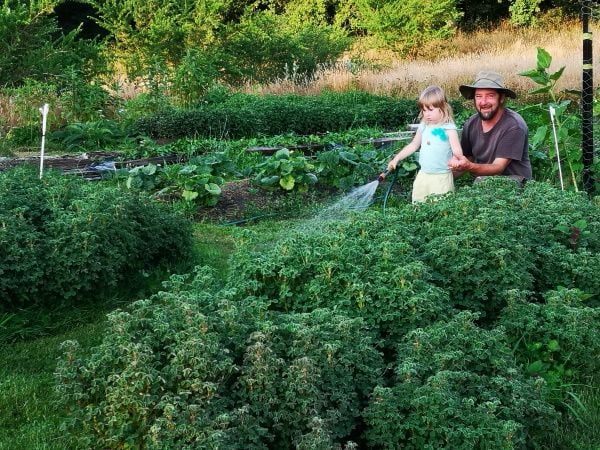
Happy New Year! At long last, after our much deserved computer holiday, we are back in the office processing orders and answering emails. We know many of you have been waiting for our seed garlic to come available on our website, and the moment is now. We are able to offer for sale our early varieties and the elephant garlic, we successfully grew and have gotten a decent crop of all our main crop cultivars, although the amount we grew is still too small for commercial sale. We hope to have Rocambole, Henry’s Soft Top and Takahue available again in the future, but the Early Pearl and Early Purple specifically are holding their own better with the rust. We had our best year with garlic in general, since rust hit us for the first time back in 2015. We have learned a lot along the way, and part of this learning process was pulling back on the quantity of garlic we grow, while we experiment to see if we can still get a crop worth selling for seed and eating. Fortunately, each year is better than the last, so something must be working!
So many folks, including commercial growers both organic and conventional have gotten out of garlic since the rust arrived. It is so very disheartening to put so much energy and effort into growing any crop and then to have nothing come of it. I think growers around the country have struggled especially with garlic failures, because for so many years it was such an easy crop to grow! Those days seem to be over, but we are finding with slightly different planting times and methods we are still seeing good results, worth the work. Here are our insights thus far into garlic growing with rust. I will repeat past insights as well as new ones from this season.
What we know about Garlic Rust:
Practical steps you can take in your garden:
Something I became aware of a couple years back, is that there are some avid garlic growers around the country growing what is technically called True Garlic Seed or TGS. We commonly refer to cloves selected for planting as garlic seed, in truth this is clone reproduction and there is no change in the variety through this method other than local adaptation. If you want to breed new varieties and develop resistance to rust through proper plant selection and breeding, then TGS is what to use. This type of garlic growing is even more a labour of love, as it is very time consuming, and difficult. Here is an interesting article on the topic to find out more. I hope that if these NZ growers are successful, one day we will be able to offer cloves from their new rust resistant variety(ies). This will take a while (years) so don’t hold your breath! I will be sure to keep you posted.
Garden Tour & Afternoon Tea - February 29th, 2020. Please see our website for more details. We are excited to see some of you here and show you around our seed gardens to talk about our garden design and what techniques we use to grow healthy plants, vegetables and seeds.
Things to Sow in the Garden Now:
January and February are the months to sow seeds for your winter garden! I know it is hard to believe that we need to be thinking about our winter veges now, but if you want broccoli in June, so now! Here is what we are planting:
Broccoli De Cicco, Kale Pohara and Red Russian, Silverbeet Fordhook Giant, Spinach Bloomsdale, Orach Red, Coriander, Salad Burnet and Carrot White Belgium. We sow lettuces each month to keep in constant supply, now we focus on the cooler season varieties like Winter, Lollo Rossa, Red Salad Bowl, Tree, and Speckled. Now is also a good time to get Asian greens like Mizuna, and Tat Soi in, as well as, Rocket and Wild Arugala to keep in supply. Remember with all brassicas they are susceptible to the white cabbage butterfly, so to protect from this, we recommend covering your crops while they get established with fine frost cloth, or remove the caterpillars by hand. Of course, there are organic sprays available, but we do not use these. We prefer instead to create a barrier so the butterflies cannot lay their eggs. Problem solved.
Don’t forget about flowers for the winter garden! Calendulas, Poppies, Lupins and Sweet Peas are frost hardy and beautiful!
We often follow Rachel Pomeroy's biodynamic calendar in Organic NZ magazine for inspiration on sowing times.
Our Website is the best place to find the most up to date information on what we have available at all times during the year.
We encourage orders through this medium, but of course we will still accept orders via email from our Catalogue or via the post using our printed order form.
And here is our Order Form PDF or Order Form Excel
Email orders from the catalogue to: sethasseeds@outlook.com
Or post order forms to: Setha's Seeds PO Box 60, Tutira 4181
And a reminder that selections of our seeds are also available from Cornucopia Organics in Hastings and Edible Garden in Ashhurst, the Thames Organic Shop in Thames and Tim's Garden in Nelson.
